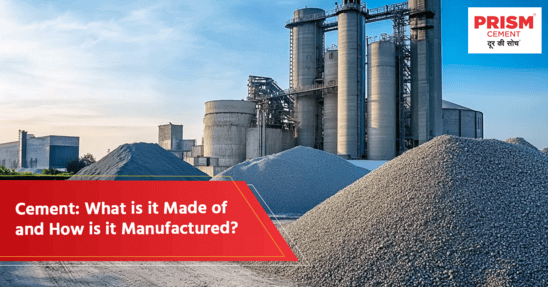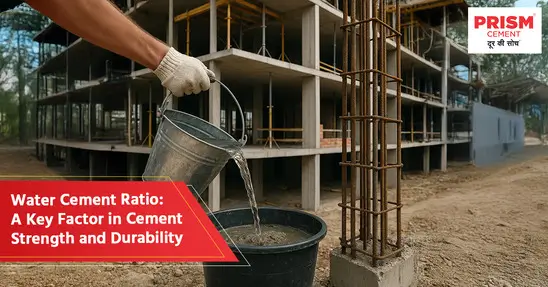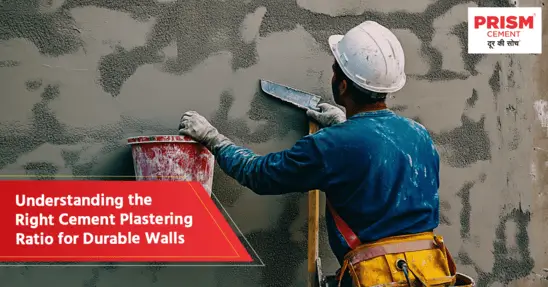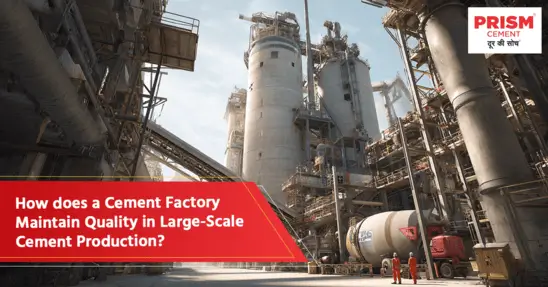Cement is everywhere. It’s in the homes we live in, the roads we drive on, and the skyscrapers that touch the sky. But have you ever wondered how cement is manufactured? What exactly goes into making this essential material that holds the modern world together?
At Prism Cement, we believe in helping homeowners understand the basics of construction cement. Whether you’re working on a large infrastructure project or building your dream home, knowing what goes into high-strength cement can help you make better choices. So, let’s break it down—what it’s made of, how it’s produced, and why it matters.
What is Cement Made of?
Cement isn’t just a gray powder you mix with water—it’s a carefully engineered material made from specific ingredients that give it strength and durability. The key components used to create construction cement include:
- Limestone – The backbone of cement, providing calcium carbonate, which is essential for strength
- Clay or Shale – Supplies silica, alumina and iron oxide, which are key elements in high-strength cement
- Gypsum – Controls how quickly the cement sets, making it easier to work with
- Pozzolanic Materials – Found in pozzolana cement and PPC cement, these materials improve durability and resistance to moisture.
- Slag – Used in composite cement, making it more eco-friendly while enhancing performance.
Each ingredient plays a crucial role in determining whether the cement will be water-resistant cement, high-strength cement or designed for specialized applications.
Types of Cement and Their Composition
Cement isn’t a one-size-fits-all product. Different projects require different cement solutions based on their environment, load-bearing capacity and exposure to elements. Here are some common types of cement, including PPC cement and other variations:
1. Ordinary Portland Cement (OPC)
The most widely used construction cement, perfect for general construction projects such as homes, offices and roads.
2. Portland Pozzolana Cement (PPC Cement)
A blend of pozzolanic materials and traditional OPC cement, PPC cement offers better durability and water resistance, making it ideal for bridges, marine structures and sewage systems.
3. Composite Cement
A mix of limestone, fly ash and slag, composite cement is designed for long-lasting, high-strength applications while reducing environmental impact.
How Is Cement Manufactured?
The process of cement manufacturing is a complex yet fascinating combination of science and engineering. Here’s a step-by-step breakdown:
Step 1: Raw Material Extraction
Limestone, clay and other essential materials are mined from quarries.
Step 2: Crushing & Blending
The raw materials are crushed into fine powder and blended in precise proportions.
Step 3: Heating in a Kiln
The mixture is heated in massive rotary kilns at temperatures as high as 1450°C, transforming it into small, rock-like clumps called clinker.
Step 4: Grinding & Mixing
The clinker is finely ground and mixed with gypsum and other additives, depending on the desired type of cement.
Step 5: Packaging & Distribution
The final construction cement is packaged and transported to construction sites, ready for use in everything from roads to skyscrapers.
Environmental Considerations in Cement Manufacturing
The demand for cement is increasing, but so are concerns about its environmental impact. The good news? The industry is evolving to make high-strength cement and pozzolana cement more sustainable.
Alternative Fuels – Manufacturers are replacing biomass and industrial waste with fossil fuels, to the extent possible, to reduce their carbon footprint.
Low-Carbon Clinker – Innovations in composite cement allow for reduced emissions while maintaining strength.
Recycling Industrial Waste – Fly ash is key ingredient in PPC cement, repurposing waste into strong, durable materials.
Energy Efficiency – New technologies help manufacture cement in kilns that use less energy and emit fewer greenhouse gases.
At Prism Cement, we are committed to providing eco-friendly cement solutions without compromising on quality.
Conclusion
Cement is more than just a building material—it’s the foundation of everything we build. Whether you need high-strength cement for a skyscraper, water-resistant cement for a basement, or pozzolana cement for durability, choosing the right cement is crucial for long-lasting construction.
By understanding how cement is manufactured and what it’s made of, you can make informed decisions that impact the quality and sustainability of your projects. At Prism Cement, we are dedicated to providing the best cement solutions for every construction need.
Looking for expert advice on choosing the right construction cement? Trust Prism Cement for unmatched quality and performance.
Frequently Asked Questions (FAQ)
Q1. What are the raw materials used to make cement?
Answer: Cement is manufactured using limestone, clay, gypsum, fly ash and pozzolanic materials resulting in durable and high-performance construction cement.
Q2. What is the process of manufacturing cement step by step?
Answer: The process includes raw material extraction, crushing, blending, heating in a kiln, grinding and packaging before it’s ready for construction use.
Q3. What is the role of clinker in cement production?
Answer: Clinker is the intermediate product formed during kiln heating. It is ground into fine powder and mixed with gypsum and other additives to produce cement.
Q4. How does the manufacturing process affect the quality of cement?
Answer: Several factors, such as raw material quality, kiln temperature and grinding precision determine the quality of the product. The mixing of additives determines whether the final product is water-resistant cement, PPC cement or composite cement.
Q5. What environmental concerns are associated with cement production?
Answer: The production of cement manufactured traditionally contributes to CO₂ emissions. However, using pozzolana cement, composite cement, and energy-efficient kilns reduces the environmental impact.




